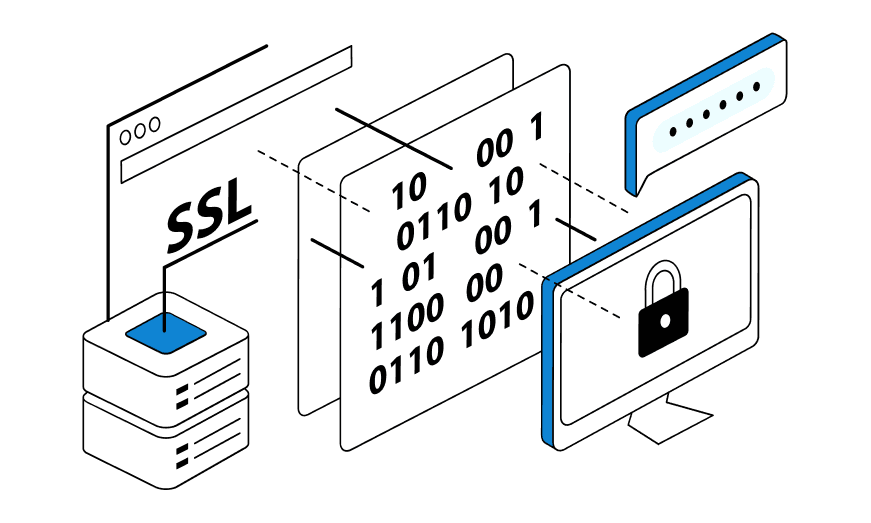
Working with Google Ads requires not only knowledge of the platform and competent ad setup, but also strict adherence to the rules. Despite this, even “white hat” advertisers face account suspensions. Sometimes this happens immediately after launching a campaign, sometimes after the first budget replenishment. The reason often lies not in the ad itself, but in the IP address, geolocation, technical traces, and browser behavior.
In this article, we will look at why Google Ads may block accounts, what role proxies play for Google Ads, how to choose a reliable proxy service to secure your work, and what mistakes most often lead to a ban. If you run large-scale advertising campaigns, work with agency accounts, or arbitrage traffic, this article will be especially useful.
Why Google Ads blocks accounts
Google Ads uses a complex automatic monitoring system that analyzes thousands of parameters: IP address, user behavior, device, cookies, click speed, browser settings. As a result, even a slight deviation from the norm can lead to blocking.
The most common reasons:
- IP from the “blacklist.” If you launch a campaign from a suspicious IP (for example, one that has been widely used for arbitrage), Google’s algorithms may automatically flag you as a violator. This is especially true when using unreliable proxies or VPNs.
- Data mismatch. The address in the account is one, but the login is from another country. This raises suspicion and can be interpreted as an attempt to cheat the system.
- Connection to previously blocked accounts. The same IP, browser fingerprint, or device — and a new account can be banned before the ad even starts.
That is why a Google Ads proxy is a necessity. Using the right tools helps you avoid bans, mimic legitimate behavior, and ensure the stable operation of your advertising campaigns.
How Google advertising proxies work
This is a tool that allows you to change the IP address, geolocation, and technical “fingerprint” of your Google account connection. It acts as an intermediary between you and Google’s servers, replacing the connection parameters. As a result, the advertising system sees you not as a new user with suspicious activity, but as a “natural” advertiser with the correct location, device, and login history.
This is especially important when working with agency accounts, launching campaigns in foreign markets, or if your advertising account has already been blocked.
Advantages of using a proxy for Google Ads
The advantages are as follows:
- Reduced likelihood of being blocked. Using a clean, unique IP address reduces the risk of being automatically banned.
- Flexibility in managing multiple accounts. You can log into different Google advertising accounts with unique IP addresses and avoid “crossing” digital footprints.
- Geotargeting settings. Running ads on behalf of a country where you are not physically located is possible thanks to a proxy.
- Security. The service allows you to protect accounts from accidental data leaks, especially when using public Wi-Fi or working with remote employees.
Which proxies are suitable for Google advertising
Not every proxy is suitable. Google Ads is a sensitive system, and it is important for it that the IP looks “natural.” Suitable options:
- Resident. They use the IP addresses of real users, so they look as natural as possible.
- Mobile. The “cleanest” in terms of anti-fraud. Suitable for arbitration and large-scale launches.
- High-quality data center proxies. Only if they are not overloaded and not used en masse — otherwise there is a high risk of being blocked.
It is important that the proxy for your Google Ads account is unique to each account and does not overlap with other projects or clients. It is also desirable that it supports a stable connection, IPv4, and HTTPS.
When to use proxies in Google advertising accounts
Here are a few options:
- When creating a new account after the previous one has been blocked.
- When managing multiple client accounts.
- When launching advertising in another country where you do not have a physical presence.
- When scaling agency traffic.
- When conducting marketing research and testing hypotheses through advertising campaigns.
Proxies for marketing research, by the way, are often used not only for Google Ads, but also for search results analysis, A/B testing, and competitive intelligence.
Examples of successful use of proxies in contextual advertising
Case 1: An agency working with foreign clients. Using proxies linked to the desired country allows them to run advertising campaigns for the US, Canada, and Europe without raising suspicion from Google. Each account has a separate IP address and has been operating stably without any blockages for over a year.
Case 2: An arbitrageur launches dozens of campaigns in the app niche. Using mobile proxies, he successfully manages 15 Google Ads accounts simultaneously. No automatic bans in 6 months.
Case 3: An eCommerce project selling in several countries. The team uses resident IPs to launch hyperlocal campaigns — with IPs from the exact city where the products are being promoted. CTR increased by 18%, and CPA decreased by 12%.

How to safely set up Google ads via proxy
To ensure that Google ads via proxy work stably and without blocking, it is important to follow a few key rules. Even when using a high-quality service, incorrect actions can lead to an instant ban. Here are the basic recommendations:
- Use a unique IP for each account. One proxy — one advertising account.
- Do not mix them up. Do not switch between different IPs within the same account — this will immediately raise suspicion.
- Set up before the first login. Do not connect to the account directly from your real IP, especially if you are launching it for another country.
- Clear your digital footprint. Use anti-detection browsers, clear cookies, and monitor your browser fingerprint.
- Be consistent. Use a reliable proxy service with technical support and minimal latency.
If you are running a proxy for e-commerce, be sure to check how it works with payment systems, websites, and conversion tracking scripts. A poor-quality proxy can break part of the analytics or cause pixel failures.
Conclusion: proxies are the key to stable advertising in Google Ads
Modern contextual advertising requires not only creatives and settings, but also a competent technical infrastructure. A proxy for Google Ads is not a workaround, but a tool: it helps you adapt to system requirements, scale, work with customers around the world, and protect your business from bans.
Proxies are especially important for agencies, arbitrageurs, and e-commerce projects operating in several countries. By choosing a reliable proxy service, you not only avoid bans, but also lay the foundation for a stable, scalable, and profitable advertising ecosystem.
FAQ
1. Can I use one proxy for multiple Google Ads accounts?
- No, this is dangerous. Using the same IP address for different accounts is a common reason for mass bans. Each account requires a separate proxy.
2. Which proxies are better for a Google Ads account — mobile or residential?
- Both options are suitable, but mobile proxies provide maximum anonymity and are better suited for arbitrage. Residential proxies are optimal for agency work and e-commerce.
3. Why does Google Ads block ads even when the rules are followed?
- Even with “white” content, algorithms may suspect unnatural behavior: IP from another country, non-standard device, technical trace. This is where a reliable proxy and anti-detection environment come in handy.
4. How do I set up an anti-detection browser to work with Google ads?
- Create a new profile with a unique fingerprint, connect the desired proxy before logging into your account for the first time, and do not change your IP after launching. Use browsers such as Dolphin{anty}, AdsPower, Incogniton.
5. Is it safe to run campaigns in different regions through a proxy?
- Yes, provided you use geo-tied and stable proxies. This is the key way to localize advertising and avoid geo-data mismatches.
6. Where can I get reliable proxies for Google Ads without the risk of being blocked?
- It is best to use trusted providers that offer proxies for e-commerce, with HTTPS support, IP rotation, and a trial period. Avoid “left-wing” lists that are publicly available.









